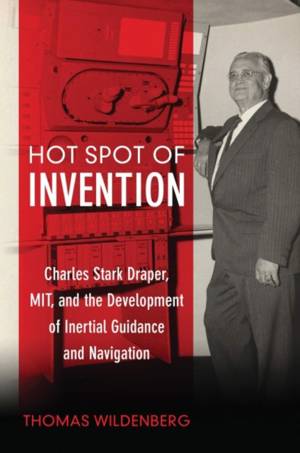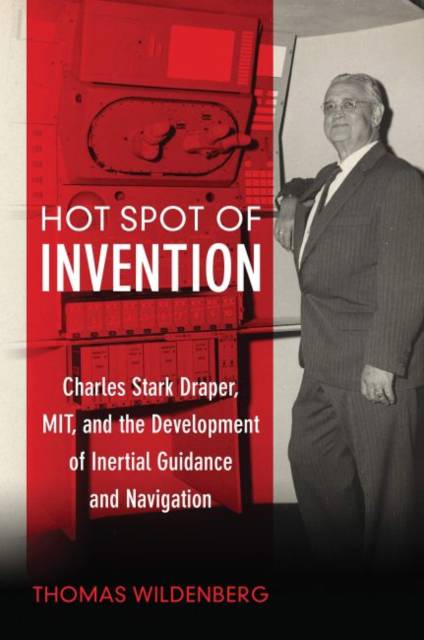
En raison d'une grêve chez bpost, votre commande pourrait être retardée. Vous avez besoin d’un livre rapidement ? Nos magasins vous accueillent à bras ouverts !
- Retrait gratuit dans votre magasin Club
- 7.000.000 titres dans notre catalogue
- Payer en toute sécurité
- Toujours un magasin près de chez vous
En raison de la grêve chez bpost, votre commande pourrait être retardée. Vous avez besoin d’un livre rapidement ? Nos magasins vous accueillent à bras ouverts !
- Retrait gratuit dans votre magasin Club
- 7.000.0000 titres dans notre catalogue
- Payer en toute sécurité
- Toujours un magasin près de chez vous
Hot Spot of Invention
Charles Stark Draper, Mit, and the Development of Inertial Guidance and Navigation
Thomas Wildenberg
Livre relié | Anglais
54,95 €
+ 109 points
Description
Charles Stark Draper, often referred to as The Father of Inertial Navigation, was the moving force behind the development of the floated gyroscope in the United States. He was an engineer, a scientist, and an inventor; an inspiring teacher; and a dynamic leader responsible for creating the laboratory that brought inertial navigation to fruition for operational use in submarines, aircraft, and space vehicles. These factors alone make him worthy of study. But Draper also created and ran the famous laboratory, now bearing his name, that helped make MIT into one of the nation's leading research centers for government research. The story of Draper's life and his accomplishments cannot be separated from those of the Instrumentation Laboratory, which are one and the same. Thus, this biography of Charles Stark Doc Draper, is also a chronological accounting of the MIT Instrumentation Laboratory and its contributions to the nation. Draper's personality, drive, and intellectual curiosity, where at the heart of the success of the MIT Instrumentation Laboratory. But Draper's success was also due to his association with MIT, a place that provided the resources, funding, and environment that enabled Draper to achieve greatness. The presence of the Institute's engine laboratory and the research fellowship that drew him back to MIT to pursue a graduate degree laid the ground work for his doctoral dissertation and the development of both the Engine Indicator and the MIT-Sperry Apparatus for Measuring Vibration. For those who are interested in naval history, three of Draper's accomplishments stand out: the Mark 14 lead-computing gunsight, the Submarine Inertial Navigation System, and the inertial guidance systems designed and engineered by Draper's laboratory for the Polaris, Poseidon, and Trident ballistic missiles. The Mark 14 was the first of several Draper gunsights and directors that revolutionized anti-aircraft gunnery in World War II. Close to eighty percent of all enemy aircraft shop down by the U.S. Navy ships in the Pacific during the period from October 1944 thru January 1945 were brought down by Draper equipped anti-aircraft guns. Draper's relationship with the Navy has continued to this day. Draper, the research institution bearing his name that evolved from the MIT Instrumentation Laboratory, continues to be the Navy's sole source for Trident's Mk-6 guidance system.
Spécifications
Parties prenantes
- Auteur(s) :
- Editeur:
Contenu
- Nombre de pages :
- 320
- Langue:
- Anglais
Caractéristiques
- EAN:
- 9781682474693
- Date de parution :
- 15-11-19
- Format:
- Livre relié
- Format numérique:
- Genaaid
- Dimensions :
- 160 mm x 231 mm
- Poids :
- 635 g

Les avis
Nous publions uniquement les avis qui respectent les conditions requises. Consultez nos conditions pour les avis.






